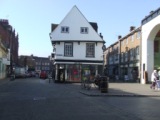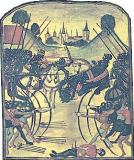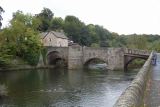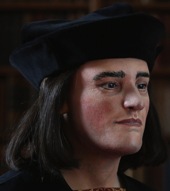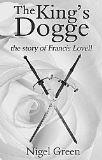
Book Review: The King’s Dogge
The following review is by Rob Smith of the New Zealand Branch and was first published in the August 2014 Ricardian Recorder. We thank Rob for his permission to post it here.
Nigel Green, The King’s Dogge: The Story of Francis Lovell, Troubador Publishing Ltd (2014) ISBN 9781783068425
This novel, written in the first person, portrays the life of the King’s Dogge, Francis Lovell up to Bosworth. A sequel is promised. A mixture of known historical facts and events coupled with the author’s vivid imagination results in, to my mind, a rather laborious narrative.
Lovell’s progression from his early days, to his service with Montague and Warwick and thence to their demise at Barnet is informative enough as is his consequent meeting with the Yorkist hierarchy and his entry into Richard’s service. Lovell’s service to Richard in Carlisle and the Border encounters with outlaws and the Scots are laid out but possibly over-emphasised. What I was to find throughout is the author’s tendency to concentrate on the minutia of lesser happenings while allowing other more significant events to be passed over lightly or ignored completely, perhaps relying on the reader’s knowledge to fill in the gaps. However, to be fair, this is a story about Lovell and if he was not involved in these events the author may consider it inappropriate to dwell on them.
What is interesting is Green’s portrayal of the various characters, not least Richard. The author’s Richard is a loyal brother but a vacillating, indecisive king and a pawn in the hands of a scheming Anne Neville who is determined to bring down the Woodville faction for what they did to her father, Warwick. She is shown as the power behind the throne. As Lovell rises to the top in Richard’s service he starts to question and has doubts about his King but remains steadfastly loyal to the end.
Buckingham, Hastings, the Stanleys, etc. are as we know them; Ratcliffe comes out OK but Catesby is shown as a fat, scheming, lawyer, self- serving from the outset as he climbs the ladder of influence, culminating in his engineering of the murder of the Princes (with Richard’s acceptance ), and his ultimate betrayal at Bosworth, being in league with the Stanleys and Northumberland conspiring beforehand in their treachery.
Incidentally, Tudor takes no part in the battle having been hidden away for his safety with decoys taking his place. Did Shakespeare get it right? …. “ I think there must be six Richmonds in the field/Five have I slain today instead of him” (Richard III Act V, Scene iv).
The King’s Dogge is an interesting portrayal of an important figure in Richard’s life but it lacks bite and requires patience and determination to reach the conclusion.
Tags: Anne Neville, Battles, Books, Francis Lovell, Nevilles, Richard III
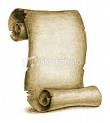 Battle of Stoke Field, Nottinghamshire, between the Yorkists on behalf of “Edward VI” and the Tudor government troops. On the Yorkist side, John de la Pole, 1st Earl of Lincoln, a nephew of both Edward IV and Richard III, was killed. He had been considered heir to the throne of Richard III after the death of Edward of Middleham. It is not quite clear who “Edward VI” actually claimed to be. According to Tudor sources he was said to pretend to be Edward, the son of George, Duke of Clarence. As the real Edward was locked up in the Tower, this was impossible. There is no surviving evidence who his own supporters said he was.
Battle of Stoke Field, Nottinghamshire, between the Yorkists on behalf of “Edward VI” and the Tudor government troops. On the Yorkist side, John de la Pole, 1st Earl of Lincoln, a nephew of both Edward IV and Richard III, was killed. He had been considered heir to the throne of Richard III after the death of Edward of Middleham. It is not quite clear who “Edward VI” actually claimed to be. According to Tudor sources he was said to pretend to be Edward, the son of George, Duke of Clarence. As the real Edward was locked up in the Tower, this was impossible. There is no surviving evidence who his own supporters said he was.